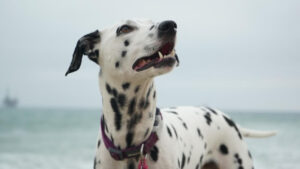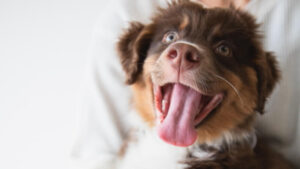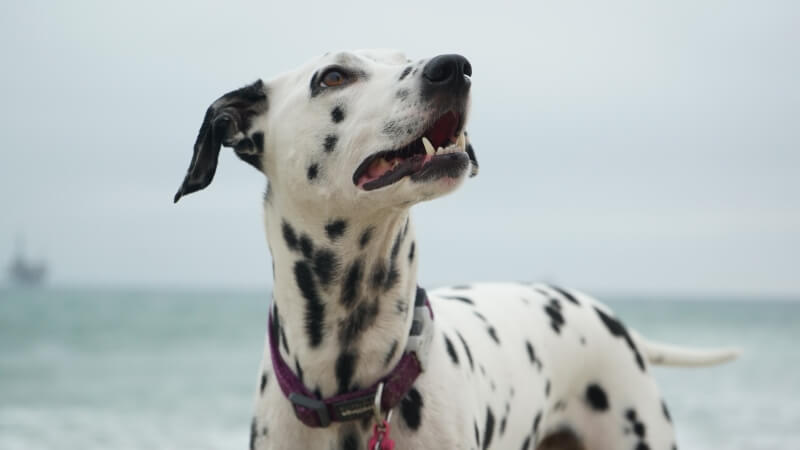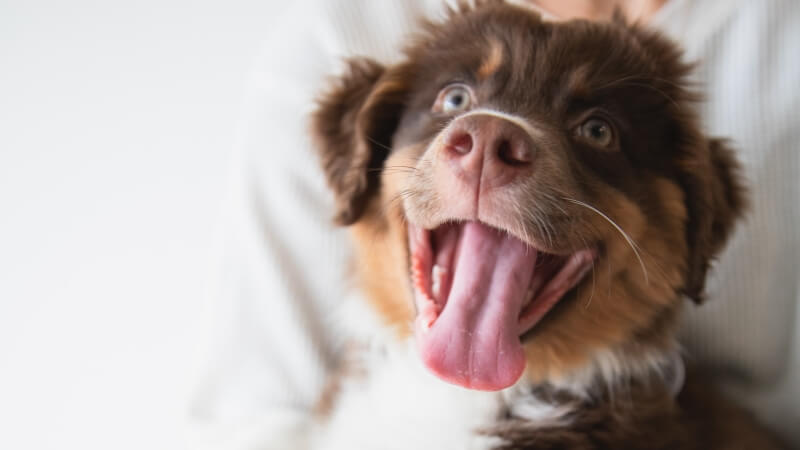
Dog Puzzle Feeder vs Interactive Toys: Which Is Best For Your Pooch?
Choosing the right plaything for your furry friend – be it a dog puzzle feeder or interactive toys – is essential for their mental and

It’s a common challenge for pet owners: what to feed a sick dog with no appetite.
If you’re feeling puzzled about this, you’re not alone.
In this extensive guide, we’ll explore various strategies and practical tips to coax your furry friend back to their food bowl, ensuring they get the necessary nutrition for a healthy recovery.
Let’s navigate this journey together and help your dog rediscover their love for food.
When dogs fall ill, their appetite often declines. This can be due to discomfort, reactions to medication, or simply feeling unwell.
Identifying the cause is crucial in addressing your dog’s reluctance to eat. Factors like the taste or smell of medication, digestive upsets, or even psychological factors like stress or anxiety can play a role in reducing appetite.
For a sick dog, eating might not seem appealing, but it’s vital.
Nutritious food provides the energy and nutrients needed to combat illness and begin recovery.
Consistent, even small, food intake can make a significant difference in their overall health and recovery speed.
Subtle adjustments can often encourage eating:
Gentle petting and soothing words can calm your dog, possibly making them more open to eating.
Changing the feeding environment or timing can also add interest to mealtime. Quiet, comfortable spaces can be more inviting for a sick dog.
The right food selection is vital for ensuring the well-being of your furry friend during times of illness or digestive distress. Here are some key considerations:
Opting for soft, bland foods such as boiled chicken and rice can work wonders for a sick dog’s upset stomach.
These easily digestible options are gentle on the tummy and can help alleviate discomfort.
You can also add a touch of low-sodium chicken broth for extra flavor and hydration.
Nutritional pastes and supplements specifically designed for dogs offer a convenient way to provide essential nutrients.
These formulations are packed with vitamins, minerals, and other vital elements that can aid in your dog’s recovery.
They come in easy-to-administer forms, making it simpler to ensure your pet gets the necessary nourishment.
Feeding a sick dog requires a gentle approach:
Comfort is key in caring for a sick dog:
Keep a close watch on your dog’s health:
Boosting your dog’s interest in food is essential, especially during illness or when dealing with a picky eater.
Here are some products that can make mealtime more enticing for your furry friend:
Puzzle feeders are a fantastic way to stimulate your dog’s mind while making mealtime an engaging activity.
They dispense food piece by piece as your dog interacts with the toy, keeping them mentally and physically active.
For dogs who refuse to eat on their own, dropper feeders come to the rescue. These handy tools allow you to administer food directly into your dog’s mouth, ensuring they receive the nutrition they need.
Dogs often prefer warm meals, just like humans. Warm food mats help maintain an appetizing temperature for your dog’s food, making it more appealing and enjoyable for them to eat.
Nutrient-rich soft dog food
Opting for nutrient-rich soft dog food can be a game-changer for sick dogs or those with dental issues.
This type of food is easier for them to consume and digest, ensuring they get the necessary nutrients without added stress.
Hydration is crucial for your dog’s recovery. Automatic water dispensers ensure a constant supply of fresh water, encouraging your dog to drink more and stay properly hydrated.
When caring for a sick dog, it’s important to recognize that their nutritional requirements may vary from their regular diet.
It’s advisable to consult with your veterinarian to address any specific dietary needs or supplements that can support their recovery effectively.
When selecting food for your sick dog, prioritize options that are rich in protein and essential nutrients while keeping complex carbohydrates and fats at a minimum.
This approach can be beneficial as it makes digestion easier during their period of illness.
Medications can mess with your dog’s appetite. Sometimes, those pills can make them feel queasy or leave a weird taste in their mouth, which can make them not want to eat.
If you think your dog’s meds might be the culprit behind their lack of appetite, have a chat with your vet. They can help figure out if the medication timing or form needs adjusting to make mealtime easier for your furry friend.
Caring for a sick pet can be emotionally taxing:
1. Take time for yourself; managing your stress can help you care for your pet more effectively.
2. Ensure you’re emotionally present when feeding; pets can pick up on our emotions, and a calm demeanor can encourage them to eat.
Consistency is comforting:
Stick to regular feeding and care routines as much as possible. Familiar routines can be reassuring to a sick dog and encourage eating.
Gentle exercise, if possible, can also stimulate appetite and improve overall well-being.
Remember, keeping your dog well-hydrated is just as crucial as feeding them. Always make sure they have access to clean, fresh water all the time.
If you notice they’re not drinking enough, you can try using a dropper to give them water or mix a bit of water into their food to help them get more fluids.
As your dog gets better, you’ll want to take it slow when transitioning them back to their regular diet.
Begin by gradually introducing their usual food, mixing it with the bland diet in increasing proportions.
Keep a close watch on how they handle their regular diet, and if any issues pop up, don’t hesitate to touch base with your vet for advice.
Post-recovery, dietary adjustments might be needed:
Some dogs may develop sensitivities or specific dietary needs after illness.
Regular veterinary check-ups can help determine if any long-term diet changes are necessary.
Navigating what to feed a sick dog with no appetite can be a daunting task, but armed with these tips and a little patience, you can help your dog through their recovery.
Remember that each dog is unique, so what works for one might not work for another. Stay observant, work closely with your vet, and maintain a supportive environment at home.
With your love and care, your dog will be on the road to recovery, enjoying their meals once again. Here’s to the health and happiness of your beloved pet! 🐶💕
How can I tell if my dog is dehydrated?
A: Check for signs of dehydration in your dog, such as dry gums, lethargy, and sunken eyes. You can also gently lift the skin on the back of their neck; if it doesn’t fall back quickly, they may be dehydrated. Always consult your vet if you suspect dehydration.
My dog is refusing even their favorite treats. Should I be concerned?
A: Yes, it’s concerning if your dog refuses even their favorite treats. This could indicate a significant decrease in their sense of taste or smell, or an underlying health issue. It’s best to consult your vet to explore the reasons behind this change in behavior.
Can I give my sick dog human food to encourage eating?
A: While some human foods are safe for dogs, it’s important to choose bland, easily digestible options like plain boiled chicken or rice. Avoid foods that are toxic to dogs, such as onions, chocolate, and grapes. Always consult your vet before introducing new foods.
How long can a dog safely go without eating?
A: The duration can vary depending on the dog’s size, age, and overall health. Generally, a healthy dog can survive for three to five days without food, but this does not mean it’s safe or advisable to wait that long. If your dog hasn’t eaten for 24 hours, contact your vet.
Are there any natural remedies to stimulate appetite in dogs?
A: Some natural remedies, like adding chicken broth to food or offering small amounts of plain pumpkin, can stimulate appetite. However, it’s important to use these remedies cautiously and always consult with your vet first, especially if your dog is under medication or has specific dietary needs.


Choosing the right plaything for your furry friend – be it a dog puzzle feeder or interactive toys – is essential for their mental and

Wondering if a puzzle feeder could revolutionize your pet’s mealtime into an exciting challenge? This unique device promises to engage your furry friend both mentally

For passionate pet enthusiasts, a puzzle feeder is more than just a toy; it’s a critical tool for mental stimulation and dietary control for their

Are you ready to dive deeper into the world of puzzle feeder and embark on a journey to ensure your furry friends remain mentally stimulated?

Choosing the right plaything for your furry friend – be it a dog puzzle feeder or interactive toys – is essential for their mental and

Wondering if a puzzle feeder could revolutionize your pet’s mealtime into an exciting challenge? This unique device promises to engage your furry friend both mentally

For passionate pet enthusiasts, a puzzle feeder is more than just a toy; it’s a critical tool for mental stimulation and dietary control for their

Are you ready to dive deeper into the world of puzzle feeder and embark on a journey to ensure your furry friends remain mentally stimulated?
Copyright © 2024 puppypuzzlefeeder. All Rights Reserved.